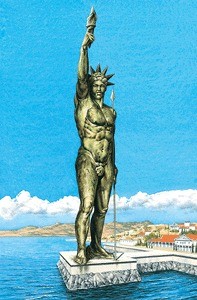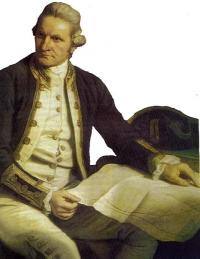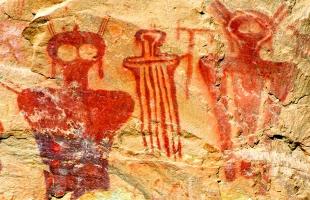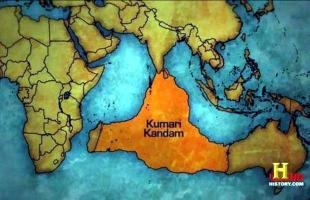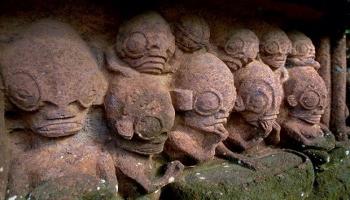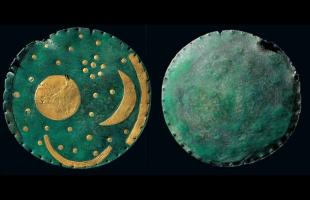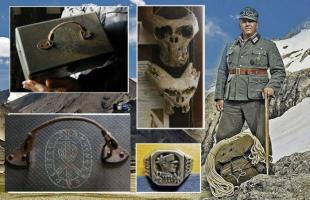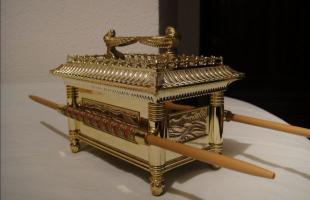The Colossus of Rhodes

We know about the Colossus less than about any other of the Seven Wonders of the ancient time. We do not know where it stood or what its appearance was; however, scholars have tried to put together all the available evidence and testimony to answer both questions.
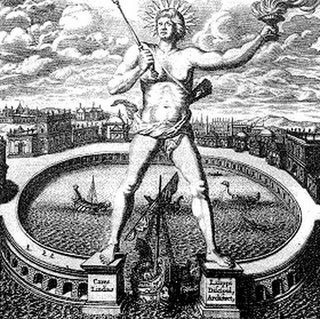
First of all - the meaning of the word Colossus. This was a pre-Greek word, originally from western Asia, to indicate a statue, albeit of modest dimensions. In this sense it was used by the Dorians when, in 1000 B.C., settled in the Dodecanese and in southwest Asia. As such the word Colossus was originally also referring to the statue of Carete dedicated to Elio. But after the creation of this monument, and its inclusion among the Seven Wonders of the Ancient World, the word came to mean only a gigantic statue.
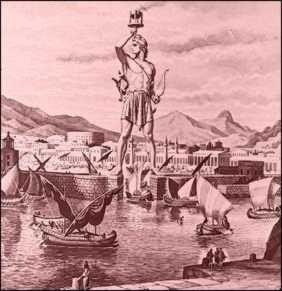
Although the Colossus is mentioned some sixteen times by the ancient writers, only three mention it at length, but their accounts raise more questions than they answer. These are Strabo, Pliny the Elder and Philo of Byzantium. A fourth source is a Greek poem, believed to be inscripted in the statue itself.
More recently, from the 15th century onwards, many have written about the Colossus. The various opinions were admirably summarized in an article published in 1932 by the French scholar A. Gabriel, who added some of his constructive personal insights.
From Gabriel's article on, very little work has been done on the matter: a 1956 article by Herbert Maryon put forward new hypotheses, especially from a technical point of view: hypotheses which, immediately largely demolished by Denys Haynes, led him to publish the first acceptable reconstruction of the true appearance of the Colossus.
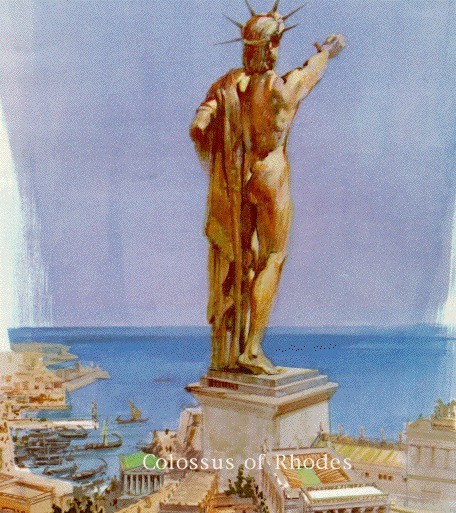
Basically, we know little about the external appearance of the statue, but some hints in this regard, made by Pliny and Strabo, deserve to be mentioned, even if very incomplete.
Pliny, in his Naturalis historia, wrote:
The most admired of all the giants was that of the Sun which was found in Rhodes by Carete di Lindo, a disciple of Lysippos. It was 70 cubits high [c. 32 meters]. This statue, which fell to the ground after sixty-six years due to an earthquake, even if on the ground, nevertheless still constitutes a wonderful sight. Few can embrace his thumb, and the fingers are larger than many other whole statues. Vast hollows open in broken limbs; inside you can see large stones, the weight of which the artist used to consolidate the colossus during construction. They say that it took twelve years to build and with an expense of 300 talents obtained from the sale of the material abandoned by King Demetrius when, tired of its prolongation, lifted the siege of Rhodes.(Pliny, Naturalis historia XXXIV 41 ff)
Strabo, in his Geography, reports:
The city of Rhodes is located on the eastern promontory of the island, and is so much superior to the other cities for its ports, roads, walls and every equipment, that I would not be able to name one equal or much less superior to it. It is also notable for the order that reigns there and for the careful attention to state affairs, and in particular to naval matters; thanks to this it maintained the dominance on the seas for a long time, eradicating the pirates and becoming a friend of both the Romans and the kings allied to the Romans as well as to the Greeks. Therefore, it not only retained its autonomy, but was also adorned with many votive offerings, which are mostly found in the Dionysius and the gymnasium, but also elsewhere. Between the most important of these is above all the Colossus of Elio, which an iambic poet says "70 cubits high, the work of Carete di Lindo". But now he lies on the ground, knocked down by an earthquake that broke his knees. The Rhodian people, admonished by an oracle, did not put him back on his feet.So this is the most important of the votive offerings; and in any case it is considered by general opinion one of the Seven Wonders.
(Strabo, Geography XIV 2.5)
These reports tell us very little about the actual appearance of the Colossus; but common sense, coupled with what the ancient writers say, or don't say, leads to the conclusion that the god was standing and was probably naked.
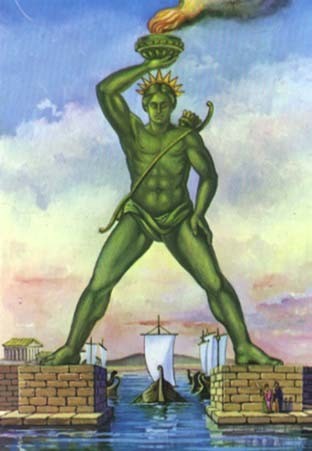
We can formulate other conjectures, and deduce that a statue of 33 meters, to stand upright, must have been of a simple line, roughly the shape of a column, with a silhouette and attitude not unlike that of a Greek kuros of the Archaic period. First of all, we must reject Maryon's reconstruction, which presented us with a naked man in the act of raising his right hand towards his head; it is based on a fragment of a marble bas-relief found in Rhodes, which clearly represents an athlete in the act of placing a crown on his head, and has nothing to do with Helios. Based on the credible evidence, Gabriel has speculated on a possible, though by no means certain, structure of the statue, which consists of a rigidly upright, naked youth with legs together, a torch in one hand and a spear in the other. As for the head of the god, scholars have always referred to the coins of Rhodes of the time which depict the head of Helios. Many of them, from about the same period, show the head surrounded by the sun's rays, an image that was then very common in representations of the god Elio. But on other Rhodesian coins of the same period there is the variant of a head without rays: the question remains open, with a propensity - on our part - for the head with rays.
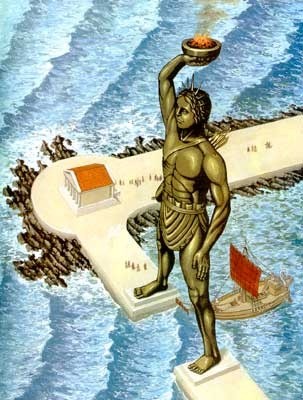
The most surprising element must have been the size of the statue, equally impressive both after the fall and when erect. Most of the descriptions agree on a height of 70 cubits, although a source which, in the given measure, perhaps included the base, speaks instead of 80. The length of the cubit in antiquity could vary slightly depending on the place or on the time, but we think we are right in indicating the overall stature of the monument in approx 33 meters.
God's statues above 10 meters were not rare in Greece, but none are mentioned as large as the Colossus, either before or after its appearance. The inspiration perhaps came from Egypt, where huge stone statues have been known since ancient times; and we know Rhodes and Egypt closely linked in the 3rd century B.C.
One of the very few statues of this magnitude, nowadays, is the bronze one of Liberty, in the port of New York, created by the French sculptor Frédéric-Auguste Bartholdi, who had the Colossus of Rhodes in his mind. Opened in 1886 to commemorate the French and American revolutions, with its 46 meters it is even taller than the Colossus.
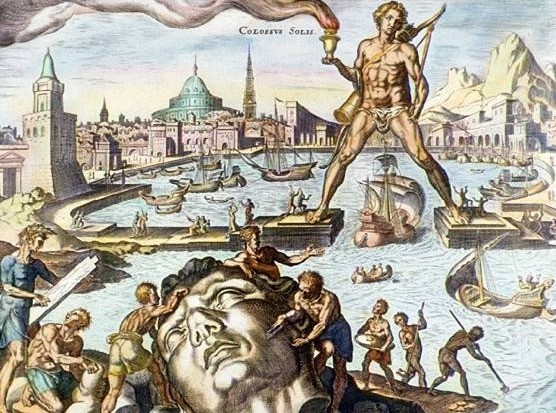
To appreciate the incredibly complicated method by which the Colossus was built, we have to look back to Philo of Byzantium. As he wrote, there is no doubt that it was forged in pieces, and that Herbert Maryon was mistaken in supposing it to be made of hammered bronze plates.
Philo says:
Spreading out below a white marble base, the craftsman first of all placed the feet of the statue up to the heels, conceived in proportion to the measurements of the god, who was to rise up to 70 cubits in height; and the sole of the foot already surpassed the other statues. In fact it was not possible to superimpose the other parts of the work by transporting them from other places; instead it was necessary to overlap the ankles and make the whole work rise on itself, like a masonry building. For this reason, while the artists initially model the other statues, then melt the various members separately and finally compose them all together, here the first part was immediately attached above the second, and on this the third was placed after the fusion, then the next, again with the same system. In fact it was not possible to remove the individual metal members. Once the fusion had taken place over the previously arranged parts, the detachments of the hooks and the joints of the clips were ensured, and the balance was guaranteed by throwing stones inside. In order to then continue the plan of operations on a firm basis, upon completion of each of the sections of the colossus, the artist accumulated a monstrous mass of earth all around, hiding the already finished part underneath it and fusing the subsequent ones on that platform.
It is evident that, given such a way of proceeding, the statue could not have had arms extended in any direction, except perhaps upwards. The fact that Caretes was a pupil of Lysippus suggests something about the appearance of the work, what was in use at the time the statue was built. Even if motionless, it could not have the austere and grave fixity of one of the archaic Greek kuroi. Lysippus delighted in adding an agile sense of motion to an athletic body at rest, and Helium of Caretes must have been no exception. None of the ancient sources report on the exact location of the Colossus in the city of Rhodes, an omission that has given rise to countless attempts to locate it, attempts all painstakingly analyzed by Gabriel.
We can neglect the theory that the statue was in the deigma, or bazaar, southeast of Mandraki Harbour, as this theory is based on a misreading of certain ancient texts. It has also been asserted that in the lower city there was a chapel of San Giovanni al Colossus, erected on the site of the Colossus itself; but Gabriel proved that there never was a chapel in that part of the city.
The belief that the statue was placed astride the port, later called Mandraki, is reported in the writings of an Italian pilgrim, a certain De Martoni, who visited Rhodes in 1394-95. He cited a popular tradition, according to which the statue rested one foot where, in his time, stood the church of San Nicola (now Fort San Nicola), at the eastern entrance to the port, while the other foot rested on the opposite side of the port entrance. This is clearly impossible, because the spread of the statue's legs, as Gabriel pointed out, would have had to exceed 400 meters.
Yet this idea, together with the other that the Colossus held a torch as a lighthouse, was widespread in the Middle Ages, both in written stories and drawings. This belief can also be derived from the bad interpretation of a poem handed down in the Palatine Anthology.
In all likelihood it is the dedication inscription of the Colossus:
Sun, for you the inhabitants of Rhodes the Doric, to the sky
the colossus they raised of bronze,
when, dormant waves of war, of enemy spoils
they made a crown for their country.
Because on earth or only on the sea they built it, light
sweet of freedom without servitude.
They are Heraclids by bloodline, it is only an ancestral heritage
the empire on land and sea.( Palatine Anthology VI 171)
Perhaps inspired by the above is the supposition, dating back to the fifteenth century, that the Colossus stood where De Martoni had placed the right foot of the statue, i.e. at the eastern entrance to the port of Mandraki. Here, at the time of the Knights, there was first a church, then a fort (which still exists), dedicated to San Nicola. This is the position that Gabriel prefers, and many elements support it. Certainly ancient building material is incorporated into the fort, and Gabriel has demonstrated the well-founded possibility that the statue's rubble did not roll into the sea, but remained on land.
We also know that, after the Colossus, the custom of placing gigantic statues at the entrance to ports spread, such as those of Ostia, the port of Rome, and of Cesarea in Palestine.
The latter is mentioned by Josephus in his Jewish War (I 413):
« The mouth of the port looked towards the north, [...], and on each of the two sides three colossal statues rose on columns ».
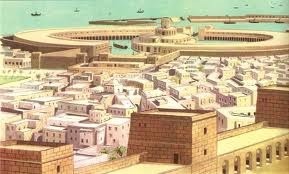
The port was built by Herod the Great between 22 and 20 B.C. Representations of similar statues appear on coins as an essential element in the depiction of ports. Several of them, which served as lighthouses at the entrance to the roadstead, must have been of gigantic proportions. However, there are two main objections to the theory that the statue stood at the harbor entrance.
First, it seems unlikely that the inhabitants of Rhodes would accept, after the destruction of the Colossus in 226 B.C., that an enormous mass of rubble occupied indefinitely such a vast and important stretch of land. Secondly, an ancient author informs us that the statue, in falling, caused the collapse of many houses around it, which could not have happened if it had been on the quay of a port.
All this leads to a conclusive hypothesis, which seems the most probable to the writer. At the top of the Strada dei Cavalieri is an old Turkish school, known to have been built in the last century on the site of the convent church of the Knights, dedicated to San Giovanni al Colosso. The church, begun in 1310, was accidentally disintegrated by a gunpowder explosion in 1856. Before attributing too much weight to the denomination given to the church of San Giovanni al Colosso, it should be noted that, due to the great fame of the statue, the adjective colossensis ("of the Colossus") in the Middle Ages was applied to the entire city of Rhodes.
However, from numerous inscriptions found near this place we have the almost absolute certainty that the temple of Aelius once stood there or in the immediate vicinity. It was common practice among the Greeks to dedicate votive offerings in the sanctuaries of the gods, so that great sanctuaries such as those of Delphi and Olympia became true museums of sculptures.
Since we know that the Colossus was an ex voto for the liberation of the city from the siege of Demetrius, it must have been raised in the temple of Elio. If the localization is to be excluded in San Nicola, the area of the Turkish school has many reasons to be considered the most probable and could reward the excavation operations. At present, a lot of ancient building material can be seen around the school, which perhaps indicates that the school was built right on the square of the primitive foundations. Furthermore, there are remains of the ancient walls both immediately outside the school gates and in the lower part of the perimeter wall in front of the Palazzo dei Grandi Maestri.
The earthquake that knocked down the Colossus (and also many other buildings in the city of Rhodes) occurred in 226 B.C. Strabo notes that the statue broke at the knees, and that Ptolemy III of Egypt's offer to immediately pay for its restoration was declined by the people of Rhodes, warned by an oracle not to rebuild it. Thus the statue remained for about 900 years where it had fallen, and travelers could see its remains as well as the mass of stone and iron that had once supported it. When the Arabs sacked Rhodes in 654, they carried the pieces of the Colossus across the sea to Asia Minor and sold them to a Jew from Emesa. Tradition has it that he brought them to Syria on the back of 900 camels; and here ends the story of the Colossus of Rhodes, the least known of the Seven Wonders.
